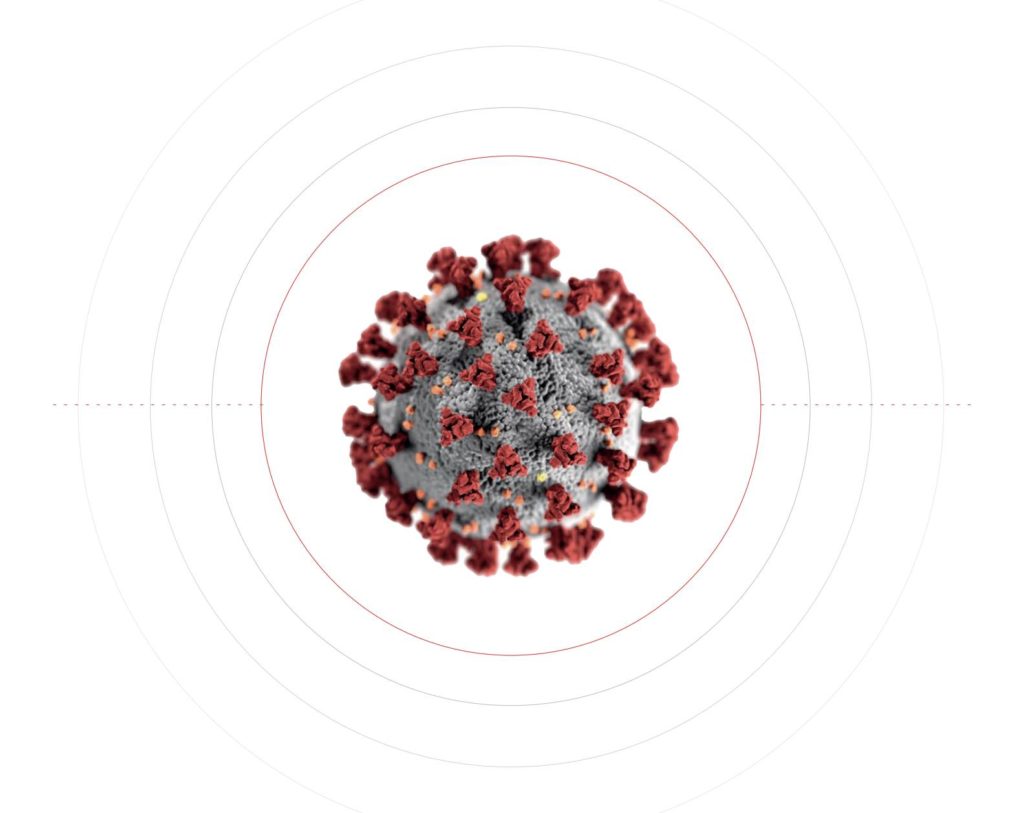
Many promising treatment options have emerged over the past year. We must ensure access to these is facilitated, in order to optimise COVID-19 outcomes.
Disclaimer: This is not medical advice. It is information for policymakers, or to take to your own doctor. HART advocates treatment only by a qualified medical practitioner in partnership with the patient. This is not an invitation to self-medication.
The idea that “there is no treatment for COVID-19” is false. In particular, treatments by GPs in outpatient settings could have a major impact on reducing hospital admissions.1,2 Various options are being tried in other countries, some sophisticated (e.g. monoclonal antibodies), and others cheap and readily available (e.g. ivermectin, vitamin D).
In March 2020 the emphasis was on hospital care with mechanical ventilation. The policy now should shift to prompt home treatment by GPs, with the objective of preventing progression to hospitalisation in as many cases as possible.
Outpatient treatment strategies have demonstrated success, particularly where multidrug therapies have been judiciously chosen, typically involving two antiviral medicines together with other low-cost adjuncts such as vitamins and antibiotics. A rural Texas practice recently reported nearly 98% of high-risk confirmed cases treated at home, with only 2% hospitalised and only a single death in 320 high-risk cases.3
For hospitalised patients, treatment protocols such as the “MATH+” protocol4 from the FLCCC group of US intensivists5 appear almost unknown in the UK, even though their survival rates for severely ill patients are superior to those elsewhere.6
Many novel and existing drugs have been the subject of clinical trials for COVID-19. The advantage of “drug repurposing” is that with existing medications the safety profile and any contraindications are already very well-known. In many cases, the medicine is already licensed by regulators. Moreover, they are available immediately, being in routine production in at least some locations. Generic (out of patent) drugs in particular, are in regular manufacture and almost all are very cheap.
As vaccination programmes advance,7 ignoring the need for other treatments would be a mistake. There remains a clear need for effective treatments to be made available:
● for those cases that still occur;
● for SARS-CoV-2 variants against which vaccines may be ineffective;
● for those for whom vaccination is medically contraindicated or declined;
● for other future winter viruses.
We look here at some of the simple treatment and prevention options.
The most obvious starting point is Vitamin D. It is well known that Vitamin D deficiency is common in the northern hemisphere in winter months, especially in the elderly, in those with obesity and also in the BAME population. These groups are all known to be at increased risk from COVID-19.8,9 Vitamin D is important for T-cell function and hence a healthy immune system.10 Back in March 2020, studies of hospital patients with COVID-19 found that patients with low Vitamin D blood levels were at increased risk of intensive care admission and of death.11,12 Small controlled trials followed13 and over the ensuing months a large body of evidence has accumulated to support Vitamin D both in terms of prophylaxis and of treatment.14 High dose vitamin D prophylaxis should be widely recommended, especially to care home residents.
Other micronutrients are also vital to our immune system, such as Vitamin C and Zinc.15,16,17 Some common antibiotics also have some antiviral properties, such as Azithromycin and Doxycycline18 and may be beneficial when used in combination with the above micronutrients.
Another promising development comes from the observation that asthmatics were not overrepresented in mortality, which seemed counterintuitive in a disease affecting the lungs. It was hypothesised that inhaled steroids common in asthma treatment perhaps offered an explanation. A trial released in February is very encouraging in this regard and offers a cheap preventative that could potentially save many lives.19,20
The literature on hydroxychloroquine became confused after a fraudulent paper21 was published in The Lancet in May, 2020. The paper has since been withdrawn but had a lasting impact on regulators. The near-simultaneous failure of the Oxford RECOVERY trial22 added to this negative impression, though this has been criticised for the very high (almost toxic) dosage used23 and was confined to hospitalised patients with late stage illness. Hydroxychloroquine has been shown to be beneficial in outpatients if given in low doses early in the infection.24 It is used as a component of “sequential multi-drug therapy” (SMDT), advocated by a large panel of experienced clinicians,25 the antivirals of choice being hydroxychloroquine, ivermectin and favipiravir. The Texas clinic cited 26 used hydroxychloroquine and ivermectin together.
Perhaps the most promising pharmaceutical agent is ivermectin, a drug little known in the UK, but widely used in the developing world.27,28 Originally developed against certain parasitic infections, and recognised with the 2015 Nobel Prize for its success in controlling onchocerciasis (river blindness) in the tropics, it also has broad-spectrum antiviral action against many RNA viruses including coronaviruses.29 There is now trial evidence showing an 89% reduction in the risk of COVID-19 when used as a prophylaxis e.g. for health care workers or exposed household members and a 79% risk reduction (for symptoms, hospitalisation or death) when used as an early treatment for community use and as an effective adjunct to in-patient treatment.30,31
A recent systematic review and meta-analysis by Dr Tess Lawrie and colleagues at the Evidence Based Medicine Consultancy32 has been endorsed in a meeting of international experts.33,34 There is compelling data from countries that are using it widely, and have had significantly lower COVID-19 mortality rates than elsewhere.35 Clinical experience using ivermectin for prolonged symptoms (“long Covid”) is encouraging.36 Serendipitous findings of apparent prophylaxis against COVID-19 in a French care home were reported, after an entire establishment was treated with ivermectin to control scabies (for which it is an established treatment).37 These have been corroborated by a letter from a Virginia geriatrician to NIH in the US, covering nearly 300 care home patients38. Although only observational studies, it certainly suggests potential for preventing care home outbreaks.
Many of the drugs above have been recommended but most of the many randomised trials have come from resource-poor countries who worked quickly early in 2020 to find medications which might prove useful. Knowing that if faced with a major pandemic their healthcare systems would be overwhelmed even more readily than in affluent countries, there was also the awareness that expensive “designer” drugs would be unaffordable. In times of emergency, a full randomised trial is not always feasible. It is noteworthy that national bodies have been willing to grant temporary approval for vaccines ahead of the standard long-term safety data, yet they appear reluctant to permit use of cheap readily available drugs, capable of saving lives, whose safety profiles are already extremely well-known.
HART urges the MHRA to consider granting approval for ivermectin, such that any qualified medical practitioner may prescribe it at their clinical discretion. Hospital treatment guidelines39 should be updated, in the light of protocols such as “MATH+” from the FLCCC group40. Community treatment algorithms are also needed as a matter of urgency,41,42 and a randomised controlled trial of ivermectin for treatment of the neglected “long Covid” patients should be supported.
Endnotes
- MASK+ Protocol – Downloads & Translations
- McCullough, P. A. et 58 alia (2020). Multifaceted highly targeted sequential multidrug treatment of early ambulatory high-risk SARS-CoV-2 infection. Reviews in Cardiovascular Medicine, 21, 517.
- Procter, B.C., Ross, C., Pickard, V., Smith, E., Hanson, C. & McCullough, P. A. (2020). Clinical outcomes after early ambulatory multidrug therapy for high-risk SARS-CoV-2 (COVID-19) infection. Reviews in Cardiovascular Medicine, 21, 611
- MATH+ Protocol & Translations | FLCCC
- Marik, P. E. et al. (2021). MATH+ protocol for the treatment of SARS-CoV-2 infection: the scientific rationale. Expert Review of Anti-infective Therapy, 19, 129
- Kory, P. et al. (2020). Clinical and Scientific Rationale for the “MATH+” Hospital Treatment Protocol for COVID-19. Journal of Intensive Care Medicine, 088506662097358. See Table 2.
- Boris Johnson hails 15 million jabs as ‘significant milestone’
- Why does COVID-19 disproportionately affect older people?
- The impact of ethnicity on clinical outcomes in COVID-19: A systematic review
- The role of vitamin D in increasing circulating T regulatory cell numbers and modulating T regulatory cell phenotypes in patients with inflammatory disease or in healthy volunteers: A systematic review
- Analysis of vitamin D level among asymptomatic and critically ill COVID-19 patients and its correlation with inflammatory markers
- Vitamin D Status in Hospitalized Patients with SARS-CoV-2 Infection
- Clinical trial to investigate whether vitamin D protects against COVID-19
- Sixty Seconds on Vitamin D – BMJ
- Zinc, Vitamin D and Vitamin C: Perspectives for COVID-19 With a Focus on Physical Tissue Barrier Integrity
- Zinc in Human Health: Effect of Zinc on Immune Cells
- Intravenous high-dose vitamin C for the treatment of severe COVID-19: study protocol for a multicentre randomised controlled trial
- Doxycycline as a potential partner of COVID-19 therapies
- Inhaled budesonide in the treatment of early COVID-19 illness: a randomised controlled trial
- Inhaled corticosteroids in virus pandemics: a treatment for COVID-19?
- Mehra, M. R., Desai, S. S., Ruschitzka, F. & Patel, A. N. (2020). Hydroxychloroquine or chloroquine with or without a macrolide for treatment of COVID-19: a multinational registry analysis. The Lancet, 22 May
- Horby, P. et 28 alia (2020). Effect of Hydroxychloroquine in Hospitalized Patients with COVID-19. New England Journal of Medicine, 383, 2030
- Lacout, A., Perronne, C. & Lounnas, V. (2021). Hydroxychloroquine in Hospitalized Patients with COVID-19. New England Journal of Medicine , 384, 881.
- Scholz, M., Derwand, R. & Zelenko, V. (2020). COVID-19 Outpatients: Early Risk-Stratified Treatment with Zinc Plus Low Dose Hydroxychloroquine and Azithromycin: A Retrospective Case Series Study. Int. J. Antimicrobial Agents, 56, 106214.
- McCullough, P. A. et 58 alia (2020). Multifaceted highly targeted sequential multidrug treatment of early ambulatory high-risk SARS-CoV-2 infection. Reviews in Cardiovascular Medicine, 21, 517.
- Procter, B.C., Ross, C., Pickard, V., Smith, E., Hanson, C. & McCullough, P. A. (2020). Clinical outcomes after early ambulatory multidrug therapy for high-risk SARS-CoV-2 (COVID-19) infection. Reviews in Cardiovascular Medicine, 21, 611
- White paper on Ivermectin as a potential therapy for COVID-19
- Role of ivermectin in the prevention of SARS-CoV-2 infection among healthcare workers in India: A matched case-control study
- The FDA-approved drug ivermectin inhibits the replication of SARS-CoV-2 in vitro
- Ivermectin is effective for COVID-19: real-time meta analysis of 44 studies
- Kory P. et al. (2020). Review of the Emerging Evidence Supporting the Use of Ivermectin in the Prophylaxis and Treatment of COVID-19 – updated Jan 16,
- Bryant, A. et al. (2021). Ivermectin for prevention and treatment of COVID-19 infection: a systematic review and meta-analysis. Preprint
- Lawrie, T.A. et al. (2021). The BIRD Recommendation on the Use of Ivermectin for COVID-19. Panel report.
- Lawrie, T.A. et al. (2021). The BIRD Recommendation on the Use of Ivermectin for COVID-19. Executive Summary.
- Review the Emerging Evidence Supporting the Use of Ivermectin in the Prophylaxis and Treatment of COVID-19 – updated Jan 12,
- (PDF) POST-ACUTE OR PROLONGED COVID-19: IVERMECTIN TREATMENT FOR PATIENTS WITH PERSISTENT SYMPTOMS OR ofPOST-ACUTE
- Bernigaud, C. et al. (2021). Oral Ivermectin for a scabies outbreak in a long‐term–care facility: Potential value in preventing COVID‐19 and associated mortality? British Journal of Dermatology
- David Chesler, MD. Letter to NIH 8 January
- AdultCriticalCare-COVID-19-October2020.pdf (squarespace.com)
- MATH+ Protocol & Translations | FLCCC
- I-MASK+ Protocol Downloads & Translations | FLCCC
- Coordination Santé Libre: proposition thérapeutique pour soigner la COVID-19 en phase précoce


